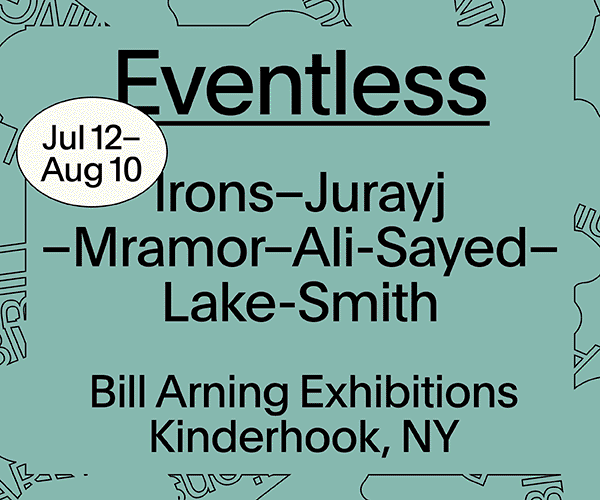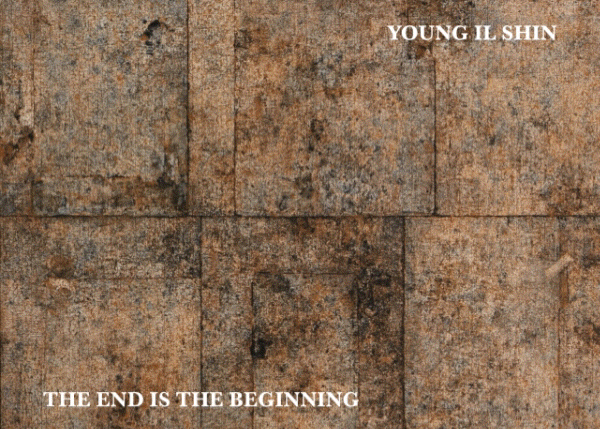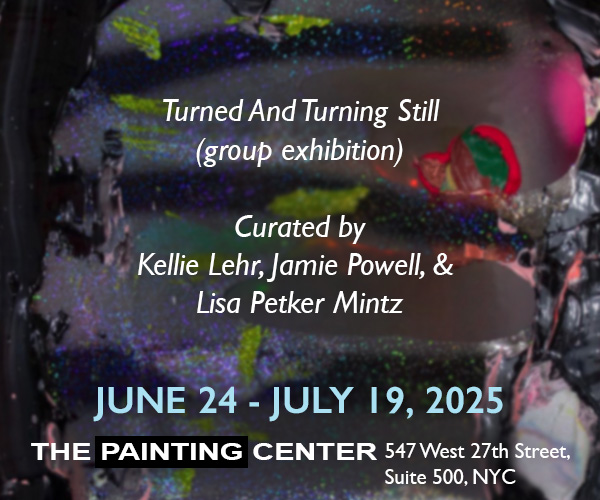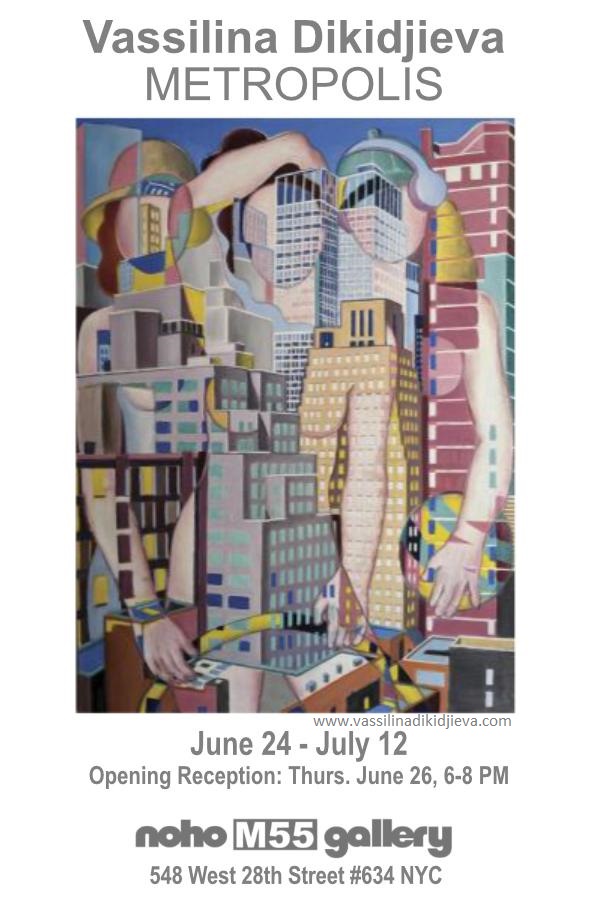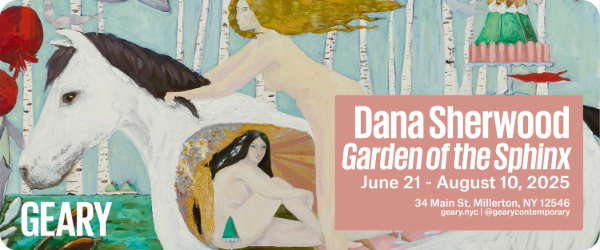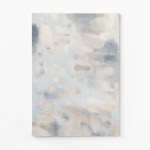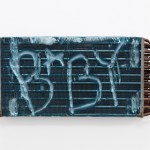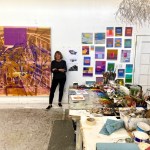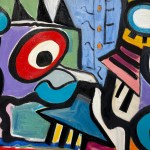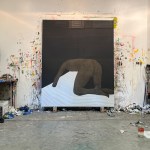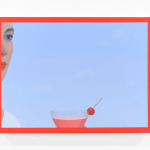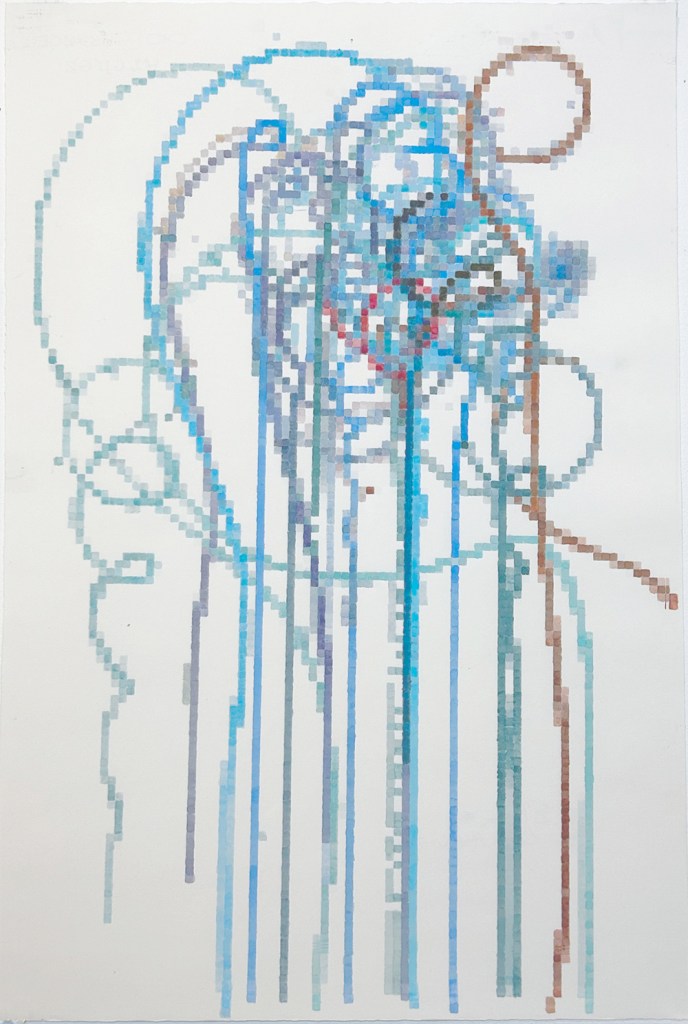
Contributed by Riad Miah / In conjunction with their two-person exhibition, The Shape of Things, at the John Molloy Gallery, I had the opportunity to engage in a conversation with artists Drew Shiflett and Carter Hodgkin about their materials and unusual creative processes. At first, their pairing seemed unexpected, as their visual languages appeared quite distinct. However, after seeing the exhibition firsthand, I came to appreciate the deep connections and underlying commonalities in their work.
Riad Miah: For each of you, your work emerges from underlying systems, with the grid as a key element. Carter, your use of color strikes me as similar to how Drew works with materials. Can you talk about your process?
Carter Hodgkin: Since 2004 I’ve used computer code simulating atomic particle collisions to create images. My process is intuitive, like drawing but with randomness embedded in the system. In this series, I’m generating forms with a whimsical, falling feeling. The forms are then translated into watercolor on Arches paper.
RM: Has technology influenced your work over the years?
CH: I’m interested in how technology can be reflected in the history of painting — this has always been my primary preoccupation. I focus on making compelling works using various media: photo silkscreen, collage, paint, and the Adobe Suite.
RM: Does your research stay digital, or does something always bring you back to handmade work?
CH: I start by incorporating forms into painting, using digital tools when necessary. Evidence of the hand is an important aspect of the work. Balancing the ethereal and the tangible is central to the process.
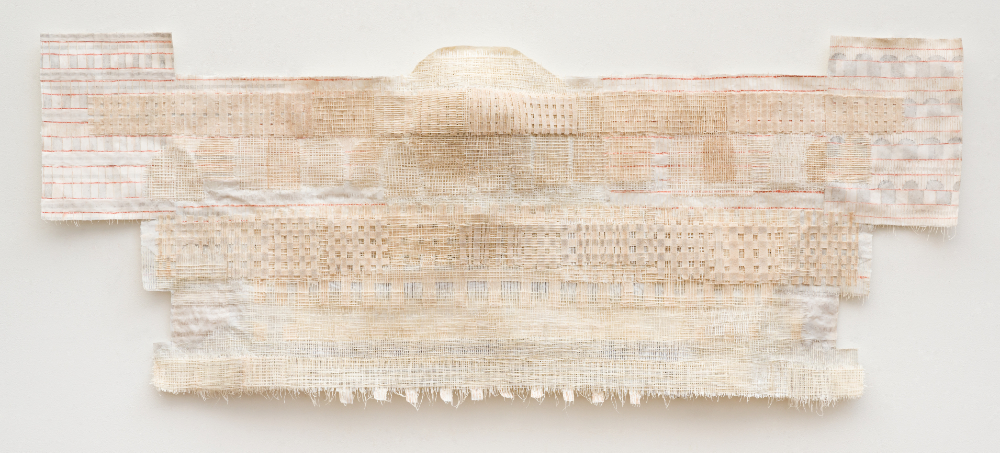
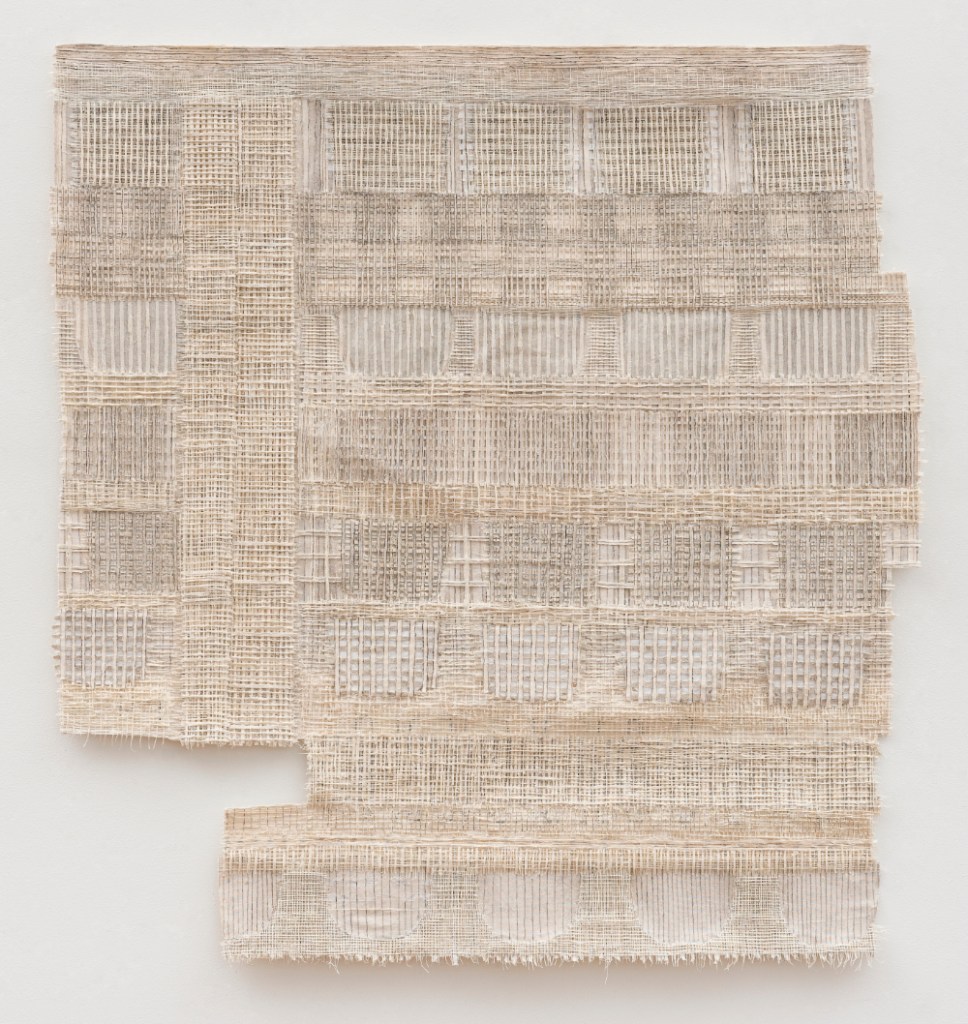
RM: Drew, your work also has a strong structural presence. Can you explain your process and how you approach materials?
Drew Shiflett: My work involves layering, building, cutting, and gluing. I begin with a scrap of paper or canvas and let the piece evolve intuitively through a collaged, labor-intensive process that is reminiscent of weaving. Drawing is integral to my art, whether in wall reliefs, sculptures, or collages. I use materials I can manipulate by hand—handmade paper, canvas, cheesecloth, pencil, and watercolor. Grids play a significant role, evoking architecture and textiles.
RM: Does dismantling materials to uncover their qualities align with your intention? And why do you retain the natural colors of your materials?
DS: Yes, dismantling materials allows me to discover their potential. I prefer subtle colors—black, gray, brown, white, cream—because they emphasize the structure, texture, and physicality of the piece. I find that more vivid colors distract from the work’s essence.
RM: It seems your work evokes architectural imagery, wall coverings, and textiles. Have you also used materials beyond traditional art supplies?
DS: Yes, I’ve used materials like canvas, cheesecloth, cardboard, metal scrap, wood, and even rubber tubing. The architectural imagery and reference to textiles are the result of motifs, such as arches and rectangles, collaged onto and through grid-like structures.
RM: Drew, you once mentioned Matisse’s influence on your early work. Who else has shaped your approach?
DS: Matisse’s use of paper cutouts had a huge impact, as did artists like Agnes Martin, Lee Bontecou, and Louise Bourgeois. I’m also inspired by ancient forms, like the cliff dwellings at Mesa Verde. I’m interested in the traces and patterns left behind by fragmented civilizations. These influences shape my approach to line, texture, and structure.
RM: It seems you both share a deep connection to materials. Carter, you explore the intersection of the digital and handmade. Drew, do you see a parallel in your practices?
DS: Absolutely. Both of us are focused on the inherent qualities of materials. Carter uses code to create technical precision, while I focus on the tactile nature of paper and canvas. But ultimately, both approaches aim to uncover deeper truths—whether through digital manipulation or physical layering.
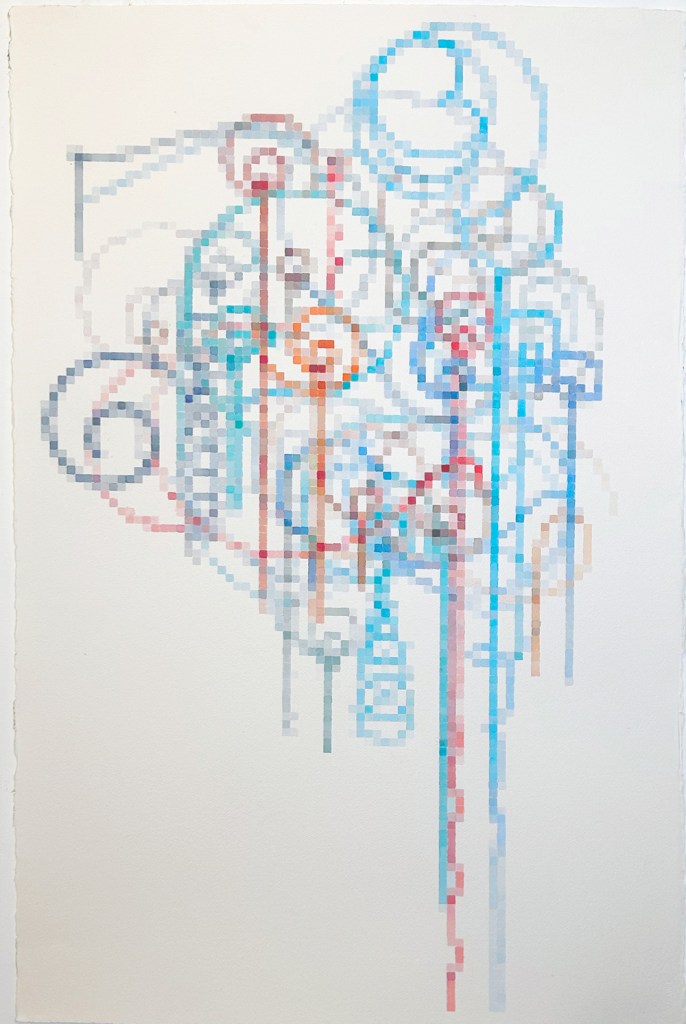
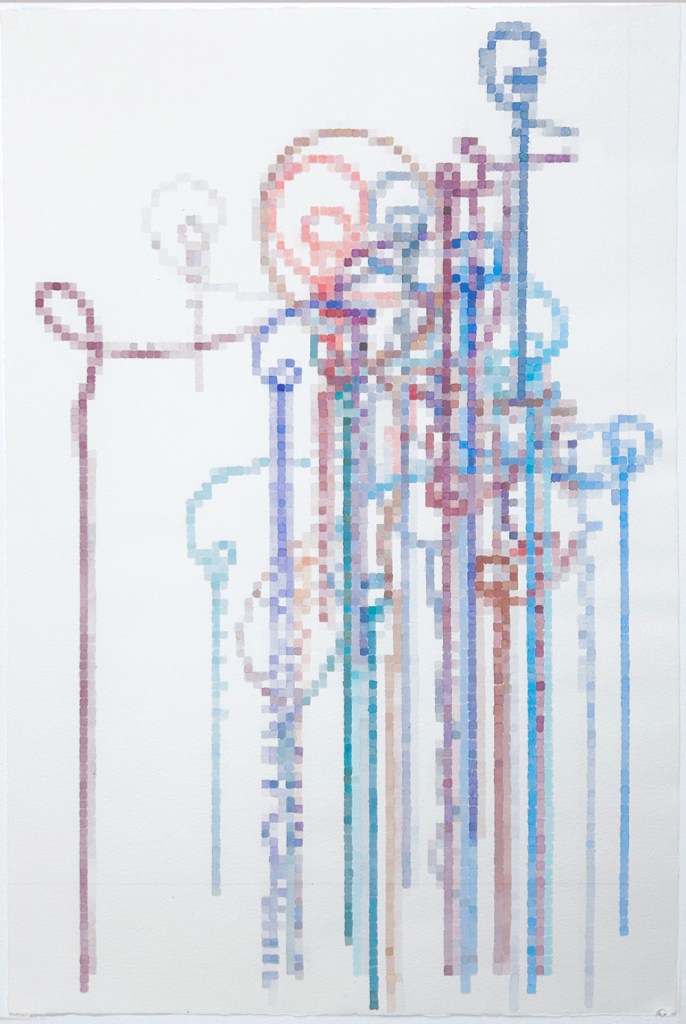
RM: It’s fascinating to see how your works explore structure—Carter through coded systems and Drew through tactile layers. How does your process guide the evolution of these forms?
CH: My work is about observing how randomness and structure can coexist. Each piece is generated by a set of instructions, but the end result is always unique. It’s about finding harmony in chaos.
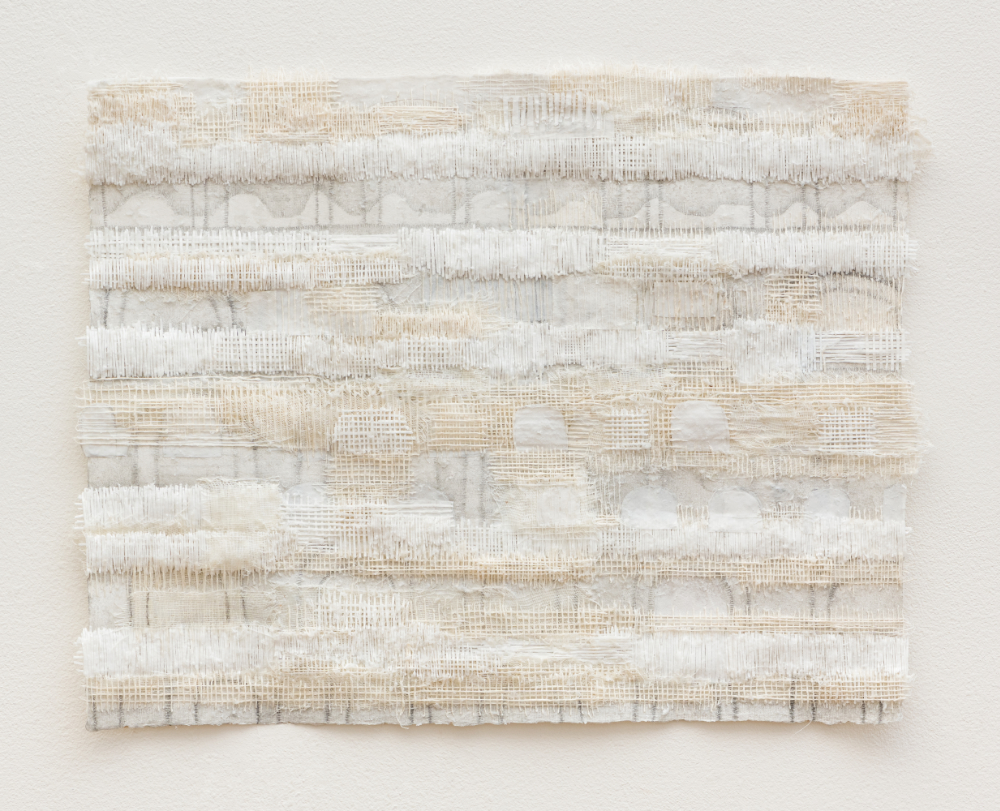
DS: For me, it’s about building and dissecting. The work evolves slowly, becoming something that’s both drawing and sculpture. Over time, the piece develops a life of its own through a balance of chaotic improvisation and deliberate markings.
RM: Your exhibition demonstrates how different methods converge on similar ideas about structure, form, and materiality. Do you think there’s a thread connecting your practices beyond just the use of the grid?
CH: Definitely. Both of us are interested in systems—whether through coded instructions or structural ones. We both seek to create order from chaos, and in that sense, our works speak the same language.
DS: I agree. The grid is just one manifestation of our desire for structure. Whether through Carter’s technical code or my tactile layering, both of us are trying to make sense of the world one piece at a time.
“The Shape of Things, Recent work by Carter Hodgkin & Drew Shiflett,” John Molloy, 49 East78th Street, New York, NY. Through February1, 2025.
About the Author: Artist and educator Riad Miah was born in Trinidad and Tobago and lives and works in New York City. He has exhibited with Equity Gallery, Lesley Heller Workspace, Rooster Gallery, and Sperone Westwater Gallery.

